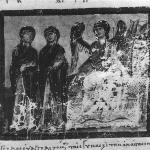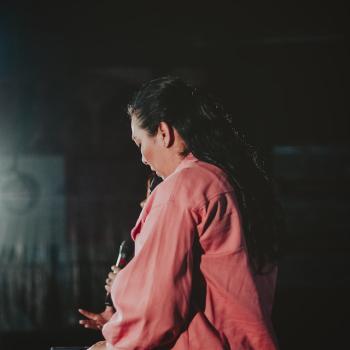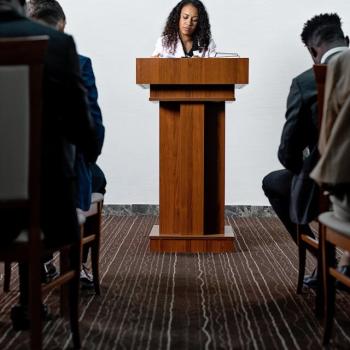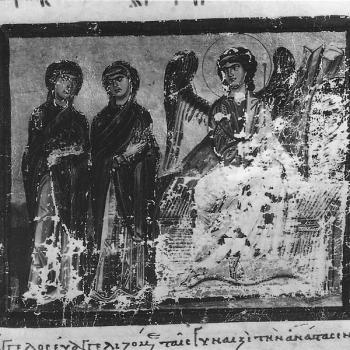It’s almost March 8, which means it’s almost International Women’s Day! For those unfamiliar with this day, it is a women’s rights holiday that focuses on issues of concern to women worldwide. These include universal suffrage, domestic violence, gender equality, and reproductive rights. Many churches acknowledge this special day, each in their own way. This day reminds us women are in the image of God, each one unique and special in purpose.
It’s not a secret to say the rights of women are in question in many places around the world. This includes some Christian denominations, where issues such as female equality, bodily autonomy, and limitation of female roles in church and life are very real. With a lack of role models, many women believe the lie that female authority is new in Christianity.
In honor of International Women’s Day, we celebrate every woman – whether we know of their contributions, or not. Here I present five women of faith who revolutionized history. Their work matters, just as much as ours does today.
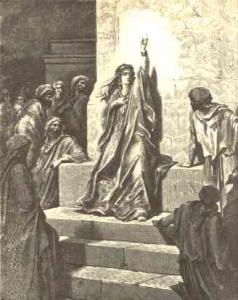
Deborah (Judges 4-5)
The Mother of Israel, Deborah arose in a day when the nation of Israel was in ruins. We learn from Scripture that Israel had no roads, travelers took to windy paths, and village life ceased – until Deborah arose.
Deborah is the only female judge in the Old Testament, which means Deborah led her people in full. She commanded the armies, settled disputes, made laws and regulations, and governed the nation of Israel. The people of Israel looked to her for guidance and with great respect. We don’t read of any disrespect to Deborah because she was a woman; quite the opposite, in fact. Barak, her military warrior, required her presence to lead the armies and go before them in battle!
Deborah was also a prophetess according to her record. This must have been quite useful when it came to leading the people. It is obvious she served as not just a political leader, but also a spiritual guide – literally, a mother in Israel!
Deborah breaks societal stereotypes for women. Think women can’t be in the military? Serve as judges? What about a woman president or head of state? Deborah dispels the notion that women aren’t competent. She shows us the grace and power in a strong woman. We also see that even though a man may not have the primary call (as was the case with Deborah’s husband, Lappidoth), a woman should not step down or accept a lesser position. We too are called to rise up and take God’s position for us, no matter what others might think of it.
Quotable quote:
Village life in Israel ceased, ceased until I, Deborah, arose, arose a mother in Israel. (Judges 5:7, NIV)
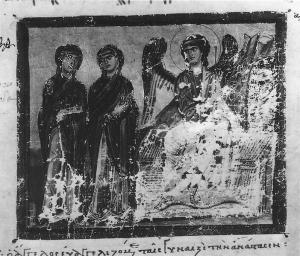
The Myrrhbearers (Matthew 27:55-61, Matthew 28:1-10, Mark 15:40-16:11, Luke 23:50-24:10, John 19:38-20:18)
The Myrrhbearers were the women involved in the preparation of the body of Jesus for burial. According to Gospel accounts, these women were:
- Mary, mother of James and Joses
- Mary Magdalene,
- Mary, the wife of Cleopas
- Martha of Bethany, Sister of Lazarus
- Joanna, the wife of Chuza the steward of Herod Antipas
- Salome, the mother of James and John, the sons of Zebedee
- Susanna
We know from Gospel accounts that these women were among the earliest followers of Jesus, following Him throughout His earthly ministry. They were supporters of His work, out of their own financial means as well as through time and devotion to His teaching.
The Myrrhbearers stood with Jesus, right through to the end, and then beyond. Many of these women remained faithful and were part of leadership within the early church. They carried the words and commands of Jesus with them, teaching them to others, and living them in their very lives. This is evident through their commitment to Jesus, even in the wake of His death. It is no mistake that many of the Myrrhbearers are either referred to as an apostle or as an “equal to the apostles.”
Quotable quote:
And many women were there beholding afar off, which followed Jesus from Galilee, ministering unto Him: Among which was Mary Magdalene, and Mary the mother of James and Joses, and
the mother of Zebedees children. (Matthew 27:55-56, KJV)
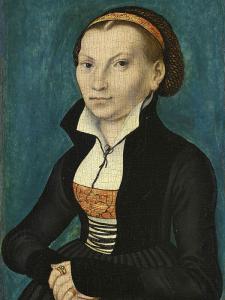
Katharina von Bora Luther (1499-1552)
Born in Kobenhagen, Germany in 1499, the future first lady of the Reformation lived in a family of impoverished Saxon nobles. She had three brothers and a sister. At the age of five, her mother died. Her father quickly remarried, thus sending Katharina to a Benedictine Cloister in Brehna. In 1508, she moved to a Cisterian convent where her maternal aunt was mother superior. Katharina took her vows as a nun on October 8, 1515, when she 16 years old.
A new life
Over time, Katharina grew tired of life in the convent and contacted the infamous Martin Luther for help to escape. Along with a few other nuns, they fled the convent, thanks to his arrangements. Within two years, Luther secured marriages, employment, or homes for all the women…except Katharina. She decided she would either marry Luther or one of his associates – and no one else! Martin Luther married Katharina von Bora on June 13, 1525. For their wedding, the Elector of Saxony gave them a former Augustinian monastery at Wittenberg. She was 26, he was 42.
Katharina was an amazing administrator and estate businesswoman. She administered and managed the holdings of the monastery, bred and sold cattle, and ran a brewery to help cover the expense of the family and students present to study with her husband. Martin referred to her as “My lord Katie” and “the boss of Zulsdorf” with full affection. This great woman was mother of six and adopted parent to four orphans, including her own nephew.
After Martin Luther’s death, Katharina found herself in difficulty. She spent the remainder of her life moving from place to place, relying on the fortunes of others to survive. She died December 20, 1552 at the age of 53.
Reminders
Katharina von Bora Luther reminds us to be open to God’s ways. We may wind up far from where we start, but we are never far from God as we follow His will. She also shows us the great power in serving through marriage. We are not called to be silent partners, dragged here and there. God calls us to but are to be active participants in our marriages. Our lives matter! We’re here to live, speak up, be counted, and follow Him, no matter where it might take us.
Quotable quote:
I will stick to Christ as a burr sticks to cloth.
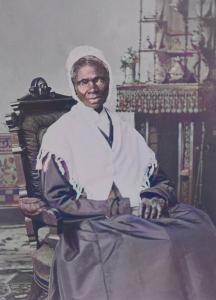
Sojourner Truth (1797-1883)
Isabella Baumfree (later Sojourner Truth) started out life as a slave on a Dutch farm and rose to become an abolitionist and women’s rights activist.
Sojourner was born one of thirteen children to James and Elizabeth Baumfree, who lived as slaves. She also had a hard life as a slave. Sojourner was raped, beaten, and mistreated under the hands of her new masters. She was later sold by again. Her new master was more congenial toward her, but had a wife who made Sojourner’s life unbearable.
In 1815, Sojourner met and fell in love with a slave named Robert. Their masters sought to keep them apart. Robert was eventually beaten and she never saw him again. In 1817, she was forced by her master to marry an older slave named Thomas. She had five children; one died in infancy and one fathered by her first love, Robert.
Sojourner escaped to freedom in 1826 with her infant daughter (she was forced to leave the others behind due to the laws of her time). She had to fight hard and long to get them back, and worked labor and housekeeping jobs in the meantime. In 1831, Isabella officially became Sojourner, joined the Methodist church, and began preaching work. She preached on abolitionism, pacifism, women’s rights, and religious tolerance. This would serve as her life’s work.
We learn the power of perseverance from Sojourner Truth; the importance of trust and faith; and the invincible spirit of woman.
Quotable quote:
If the first woman God ever made was strong enough to turn the world upside down all alone, these women together ought to be able to turn it back, and get it right side up again!
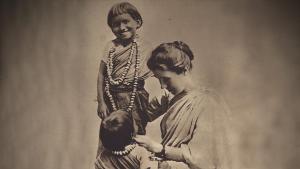
Amy Beatrice Wilson Carmichael (1867-1951)
Amy Beatrice Wilson Carmichael was a sickly child and young adult with a solid faith formation. She went from a young girl praying for God to change her eye color to blue to a prominent and powerful force in the lives of girls in India.
In Amy’s day, missionaries did not just bring the Gospel to foreign lands. They also brought European or American social culture. Treating the eastern peoples as if they were degenerate, such missionaries regarded eastern customs as morally inferior to western ones and required converts to adapt western dress, language, and names. Amy didn’t do this. She adopted Indian dress, gave the children she worked with Indian names, and dyed her skin using coffee. Her efforts became the Donhavur Fellowship, which worked with young girls rescued from temple prostitution. Still in existence, the Donhavur Fellowship has rescued countless children from poverty and misery.
Many of us fail to see God’s hand at work in every aspect of our lives, including our physical features, personalities, and desire to do good and spread His message. We may not understand
why everything is, but we can always see God working in and through us. Amy Carmichael also reminds us of the universal message of the Gospel. It is indeed a word for all people. It has the power to inspire those of every culture to praise God with all they have to offer.
Quotable quote:
One can give without loving, but one cannot love without giving.



